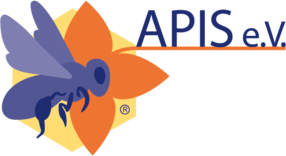Wissenschaftliche Veröffentlichungen
Baal, T., B. Denker, W. Mühlen und B. Surholt: Ursachen des Massensterbens von Hummeln unter spätblühenden Linden. Natur und Landschaft 69, 9, S. 412-418, 1994
Illies, I. & Mühlen, W.: The Foraging Behaviour of Honeybees and Bumblebees on Late Blooming Lime Trees (Tilia spec) (Hymenoptera: Apidae) Das Sammelverhalten von Honigbienen und Hummeln an spätblühenden Linden (Tilia spec) (Hymenoptera: Apidae) S. 155-165; Pollinator Behaviour and Plant-Insect Interactions I; [Bestäuber-Verhalten und Pflanzen-/Insekten-Wechselwirkungen I] Ed.: Chittka, Lars 2007. Entomologia Generalis, Volume 29 Number 2-4, 2007)
Harz, M., Müller, F., Rademacher, E.: Organic Acids: Acute toxicity on Apis mellifera and recovery in the haemolymph. Journal of Apicultural Research 49 (1), 95-96, 2010.
Mühlen W.: Implication of the IGR Alsystin WP 25 on the Development of Honeybee Colonies under Field and Semi-field Conditions. Hazards of Pesticides to Bees – 6th International Symposium of the ICP-BR Bee Protection Group, in Braunschweig, Appendix 16, 8 pages, 1996
Mühlen, W. und B. Surholt: Rehabilitation eines wertvollen Trachtbaumes: Die Silberlinde. Deutsches Bienen Journal, 9, S. 428-431, 1995.
Mühlen, W. und B. Surholt: The Rehabilitation of a Visuable Nectar Source The Silver Lime. The Scottish Beekeeper. 74 (1), S. 319-322, 1997.
Mühlen, W., V. Riedel, T. Baal und B. Surholt: Insektensterben unter blühenden Linden. Natur und Landschaft 69, 3, S. 95-100, 1994
Rademacher, E. & Harz, M.: Application study: hop acids to control varroosis – laboratory trials, in: Association of Institutes for Bee Research, Report of the 58th Seminar in Berlin, 29-31 March 2011 Apidologie 42 (6) 771-796, 2011.
Rademacher, E. & Harz, M.: Application study: hop acids to control varroosis – colony trials, in: Association of Institutes for Bee Research, Report of the 58th Seminar in Berlin, 29-31 March 2011 Apidologie 42 (6) 771-796, 2011.
Rademacher, E. & Harz, M.: Standardisation of methods: bee and mite toxicity testing in the laboratory, in: Association of Institutes for Bee Research, Report of the 58th Seminar in Berlin, 29-31 March 2011 Apidologie 42 (6) 771-796. 2011.
Rademacher, E. & Harz, M.: Oxalic acid for the control of varroosis in honey bee colonies – a review. Apidologie 37, 98-120, 2006.
Rademacher, E., Harz, M., Schneider, S.: Effects of oxalic acid on Apis mellifera (Hymenoptera: Apidae). Insects 8,84, 2017.
Rademacher, E., Harz, M., Schneider, S.: The development of HopGuard® as a winter treatment against Varroa destructor in colonies of Apis mellifera. Apidologie, DOI: 10.1007/s13592-015-0363-0, 2015.
Schäfer, H. und W. Mühlen: First Experiences to the Side-Effects of Alsystin on Bumblebees (Bombus terrestris L.) in the Field. Proceedings of the 6th International Symposium on Hazards of Pesticides to Bees. Braunschweig 1996, ed. Gevin Lewis 1997.
Schur A, Tornier I, Brasse D, Mühlen W, Von Der Ohe W, Wallner K, Wehling M: Honeybee brood ring-test in 2002: method for the assessment of side-effects of plant protection products on the honey bee brood under semi-field conditions. Bulletin of Insectology, 56 (1), 1 – 7, 2002
Steen van der J. J. M, C. Gretencord und H. Schäfer: Methods to Determine the Acute Oral LD50 of Pesticides for Bumblebees (Bombus terrestris L.). Proceedings of the 6th International Symposium on Hazards of Pesticides to Bees. Braunschweig 1996, ed. Gevin Lewis 1997.
Surholt, B. und W. Mühlen: Blühende Silberlinden: Heimtückische Insektenfallen oder wertvolle Nahrungsquellen. Beiträge zur Gehölzkunde, S. 4-17, 1997.
